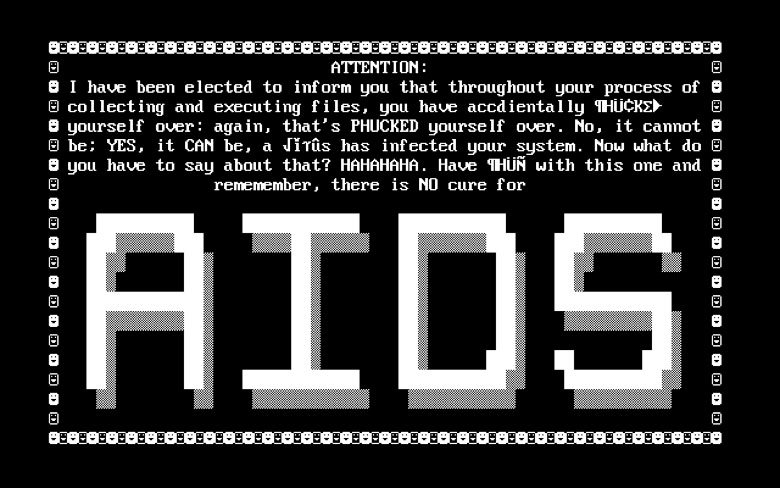The AIDS Trojan, also known as the PC Cyborg virus, was the first ever ransomware virus documented. It was released via floppy disk before most of us ever had the opportunity to touch a computer in 1989.
The AIDS trojan was created by a biologist Joseph Popp who handed out 20,000 infected disks to attendees of the World Health Organization’s AIDS conference. The disks were labeled “AIDS Information - Introductory Diskettes”, and included leaflets that warned that the software would “Adversely affect other program applications” and also stated, “you will owe compensation and possible damages to PC Cyborg Corporation and your microcomputer will stop functioning normally.”
Below is the message floppy disk recipients received if they indeed inserted the disk:

The program would count the number of times the computer was booted and once it reached 90 it would hide the directories and encrypt or lock the names of the files on the C drive. To regain access, the users would have to send $189 to PC Cyborg Corporation at a PO box in Panama. The AIDS Trojan was pretty easy to overcome as it used simple symmetric cryptography and tools were soon available to decrypt the files.
Aside from being the father of ransomware, Joseph L. Popp was a very interesting person. Some of his other accomplishments included studying hamadryas baboons in East Africa for fifteen years, opening the The Joseph L. Popp, Jr. Butterfly Conservatory in upstate New York, self-publishing Popular Evolution, a new model for the ultimate kind of self-help that argues that humanity's only purpose is to "maximizing reproductive success” before his death in 2007.
